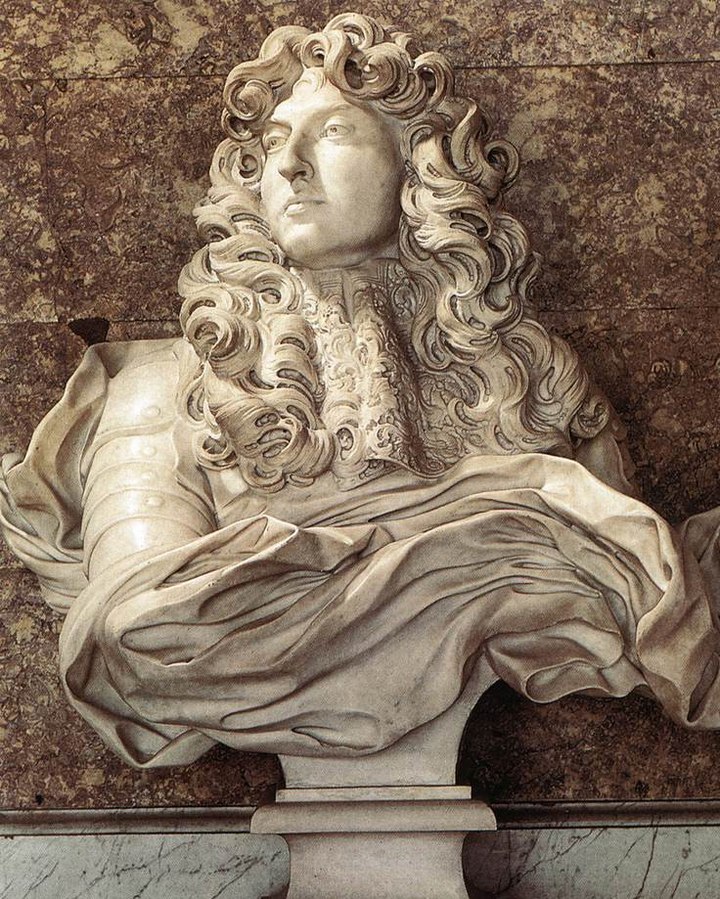‘Boulle Work’

‘Henry IV established the privileged status for the artists in 1608 in a lettre patente (royal decree) in which he stated his express purpose of encouraging the flourishing of the arts in France through a sort of cross-pollenisation and co-operation. The inhabitants enjoyed the status for life which freed then from the strict laws of the guild system and granted other legal and fiscal benefits. The system was very important to André-Charles Boulle who was granted the prestige of a workshop in 1672, the same year he was named ébéniste, ciseleur, doreur du roi (cabinet maker, chaser, gilder to the King) by Marie-Thérèse d’Autriche (1638-1683), Louis XIV’s wife and Queen. The space was too small for a furniture production workshop of any scale, so basically served as a calling card or prestigious address for Boulle who still possessed his family workshop on Rue de Reims on the left bank, and was eventually granted a large space of over 500 square meters in an abandoned theatre in the Louvre. In addition, the lack of guild control allowed Boulle, who was also trained as a sculptor, to create and cast his own gilt bronze mounts for his furniture. From 1685, he possessed his own foundry, a critical aspect to the originality of his work. Boulle also created objects purely in gilt-bronze such as chandeliers, clocks, firedogs, wall lights among others, which contributed greatly to his fame.’ Source: http://bit.ly/2C06wOS
Boulle's Works
It would appear that André-Charles Boulle kept few accurate records of his prodigious output. The identification of furniture produced by Boulle’s workshop is greatly hampered by a lack of documentation of the pieces he created. Unhappily it is therefore no easy task, even for an expert, to confirm the authenticity of a Boulle commode, bureau, or table from his workshops. His sons unquestionably carried on the traditions for some years after his death but he also had many imitators some of whom were very capable, indeed. A few of his masterpieces are undoutedly amongst the world’s mobiliary treasures. Rather than having his own internal system of identification or poinçon or mark on each piece, Boulle depended on the records kept by the Bâtiments du Roi. These, did not identify new works with specific entry numbers as and when they were being produced nor did they keep a detailed daily journal of output. Had Boulle used the Royal Wardrobe procedure, the Garde-Meuble de la Couronne, to identify and record his output, we would be better placed today to attribute his Art where it is due. Of his many Royal commissions, only a pair of commodes delivered in 1708 and 1709 to the King at the Grand Trianon can be securely linked to any sort of definitive documentation to confirm provenance. A series of grand armoires in the Louvre Museum and the Wallace Collection are also securely attributed to his workshop. Identification of some of Boulle’s works (with the tell-tale refinements of the marquetry and the re-use of marquetry templates and characteristic boldly sculptured brass mounts) can also be provenanced from: (i) three sets of images of furniture designs engraved by Boulle and published by his friend Pierre-Jean Mariette around 1720; (ii) pieces depicted in a series of workshop drawings traditionally ascribed to Boulle in the Musée des Arts Décoratifs, Paris, and in private collections; (iii) descriptions in the inventory of works in progress when Boulle transferred legal ownership of the workshops to his sons, in 1715. The truth is that this wonderful work, with its engraved or inlaid designs; its myriads of tiny pieces of ivory and copper, ebony and tortoiseshell, all kept together with glue and tiny chased nails, and applied very often to a rather soft, white wood, has difficulty in withstanding the ravages of time and the variations of the atmosphere. Alternate heat and humidity are much greater enemies of Boulle Work than time and wear.